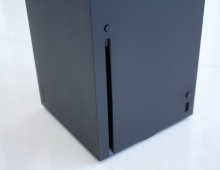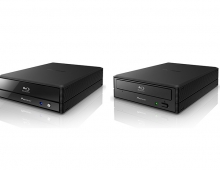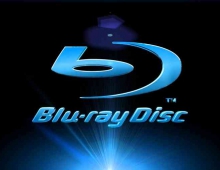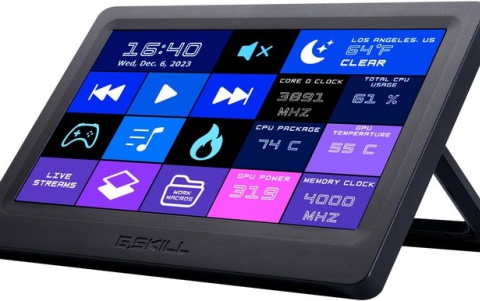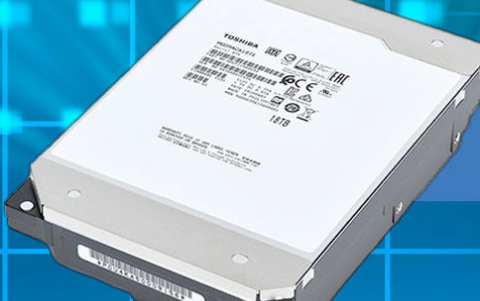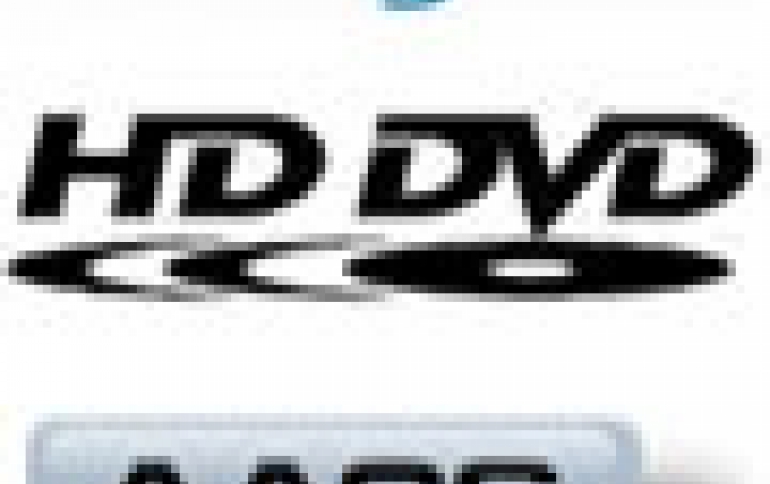
AACS Content Protection Scheme Details
The HD DVD Promotion Group explained the Advanced Access Content System (AACS), the content protection scheme for the next generation HD optical disc formats, at a seminar held last week in Frankfurt, Germany, during the Media-Tech Expo technology show.
AACS is the copy protection scheme that will be part of both HD DVD and Blu-Ray devices. The Advanced Access Content System Licensing Administrator (AACS LA) is responsible for the development of specifications to manage content stored on next-generation optical media used on PCs and CE devices. The solution is format-neutral and is designed for both Blu-ray and HD DVD, for use with PCs and other consumer devices.
AACS features a strong cryptography scheme, using an advanced encryption standard with 128-bit keys. It also includes a next-generation media key block (MKB), which will be placed on the HD DVD and Blu-ray media. The basic "strength" of the AACS compared to previous content protection schemes is the ability to revoke compromised devices. This means that any device will not be able to playback a next-generation disc if a compromised key is detected.
Current status: Interim Licensing
AACS LA released in February 17, 2006 the interim specifications of AACS, which are currently available for licensing. The final specifications and licensing is expected to be available in Q2 2006. Any device that will be available in the market before the release of the final specifications will adopt the interim licensing scheme.
AACS LA released the interim specifications first in order to expedite consumer access to next-generation optical disc technologies. Content and devices produced under interim licensing will be compatible with final license terms and technology. In addition, AACS is backwards compatible, allowing basic playback of pre-recorded media/content in any compatible player.
However, the interim specifications do not include three basic features of AACS: Managed Copy, Digital Only Token and Audio Watermark.
Managed Copy
Managed Copy will be a basic feature of the final AACS specifications. It enables movement of content onto home network and portable devices. The specifications allow first-generation AACS-protected discs to be Managed Copy-ready. Devices manufactured under the Interim License will have access to entire library of contents (i.e., discs produced under current and future AACS specifications). Managed Copy technologies currently submitted include CPRM, VCPS, WMDRM, MagicGate, as well as AACS fro Recordable Media. Managed Copy will be permitted under the Final License only.
Image Constrain Token
Image Constrain Token (ICT) is a protection scheme applicable to analog outputs of a device. It provides a maximum resolution of 960x540 for legacy analog devices, which is superior to current DVDs but less than HD. The pre-recorded media (movies) that will support the ICT should have a clear indication on the disc when ICT used on the specific release. However, the ICT is employed at the option of the content owners, which means that not all the Hollywood releases will support it, at least for now.
Digital Only token
Digital Only token will be utilized to enable new business models that are materially different from traditional video sell-through. For example, it will be used in "Day and date" releases of a disc and theatrical versions, or in HD preview content before generally available. The feature restricts content from flowing out of analog outputs, protecting content from piracy. If employed, the disc is required t be clearly labeled to avoid consumer confusion. Digital Only token will be permitted under terms of Final Agreement (Q2 2006).
Audio Watermark
Audio Watermark will also used at the discretion of content providers. An inaudible signal chosen by content providers will be inserted into the audio track of the content, and it will be invisible to authorized users. The Interim devices will not detect watermark, while the final devices will detect it and respond (revocation) to Watermark in pirated content. Again, the Watermark detection is addressed in Final License.
Analog Sunset
Analog sunset describes the sunset of all analog outputs in devices. The feature is obviously not applicable until Final License, and addresses the balance between content protection needs and realistic timeframe for digital output adoption. By 2010, analog output is expected to be limited to SD Interlace Modes only (i.e., composite, S-Video, 480i component) and by 2013, the sunset for all analog output is scheduled.
AACS features a strong cryptography scheme, using an advanced encryption standard with 128-bit keys. It also includes a next-generation media key block (MKB), which will be placed on the HD DVD and Blu-ray media. The basic "strength" of the AACS compared to previous content protection schemes is the ability to revoke compromised devices. This means that any device will not be able to playback a next-generation disc if a compromised key is detected.
Current status: Interim Licensing
AACS LA released in February 17, 2006 the interim specifications of AACS, which are currently available for licensing. The final specifications and licensing is expected to be available in Q2 2006. Any device that will be available in the market before the release of the final specifications will adopt the interim licensing scheme.
AACS LA released the interim specifications first in order to expedite consumer access to next-generation optical disc technologies. Content and devices produced under interim licensing will be compatible with final license terms and technology. In addition, AACS is backwards compatible, allowing basic playback of pre-recorded media/content in any compatible player.
However, the interim specifications do not include three basic features of AACS: Managed Copy, Digital Only Token and Audio Watermark.
Managed Copy
Managed Copy will be a basic feature of the final AACS specifications. It enables movement of content onto home network and portable devices. The specifications allow first-generation AACS-protected discs to be Managed Copy-ready. Devices manufactured under the Interim License will have access to entire library of contents (i.e., discs produced under current and future AACS specifications). Managed Copy technologies currently submitted include CPRM, VCPS, WMDRM, MagicGate, as well as AACS fro Recordable Media. Managed Copy will be permitted under the Final License only.
Image Constrain Token
Image Constrain Token (ICT) is a protection scheme applicable to analog outputs of a device. It provides a maximum resolution of 960x540 for legacy analog devices, which is superior to current DVDs but less than HD. The pre-recorded media (movies) that will support the ICT should have a clear indication on the disc when ICT used on the specific release. However, the ICT is employed at the option of the content owners, which means that not all the Hollywood releases will support it, at least for now.
Digital Only token
Digital Only token will be utilized to enable new business models that are materially different from traditional video sell-through. For example, it will be used in "Day and date" releases of a disc and theatrical versions, or in HD preview content before generally available. The feature restricts content from flowing out of analog outputs, protecting content from piracy. If employed, the disc is required t be clearly labeled to avoid consumer confusion. Digital Only token will be permitted under terms of Final Agreement (Q2 2006).
Audio Watermark
Audio Watermark will also used at the discretion of content providers. An inaudible signal chosen by content providers will be inserted into the audio track of the content, and it will be invisible to authorized users. The Interim devices will not detect watermark, while the final devices will detect it and respond (revocation) to Watermark in pirated content. Again, the Watermark detection is addressed in Final License.
Analog Sunset
Analog sunset describes the sunset of all analog outputs in devices. The feature is obviously not applicable until Final License, and addresses the balance between content protection needs and realistic timeframe for digital output adoption. By 2010, analog output is expected to be limited to SD Interlace Modes only (i.e., composite, S-Video, 480i component) and by 2013, the sunset for all analog output is scheduled.




